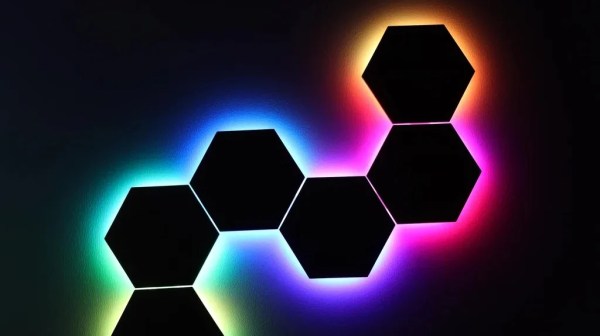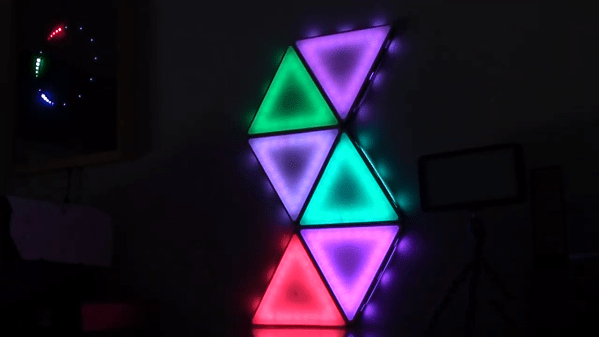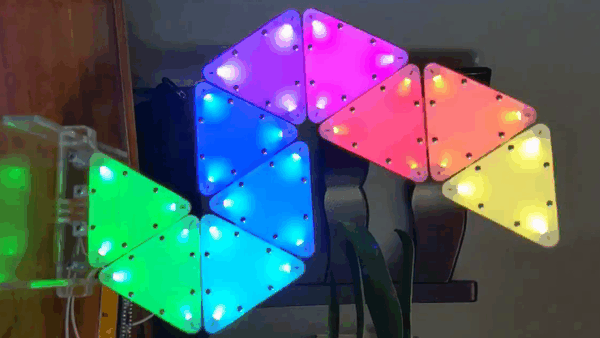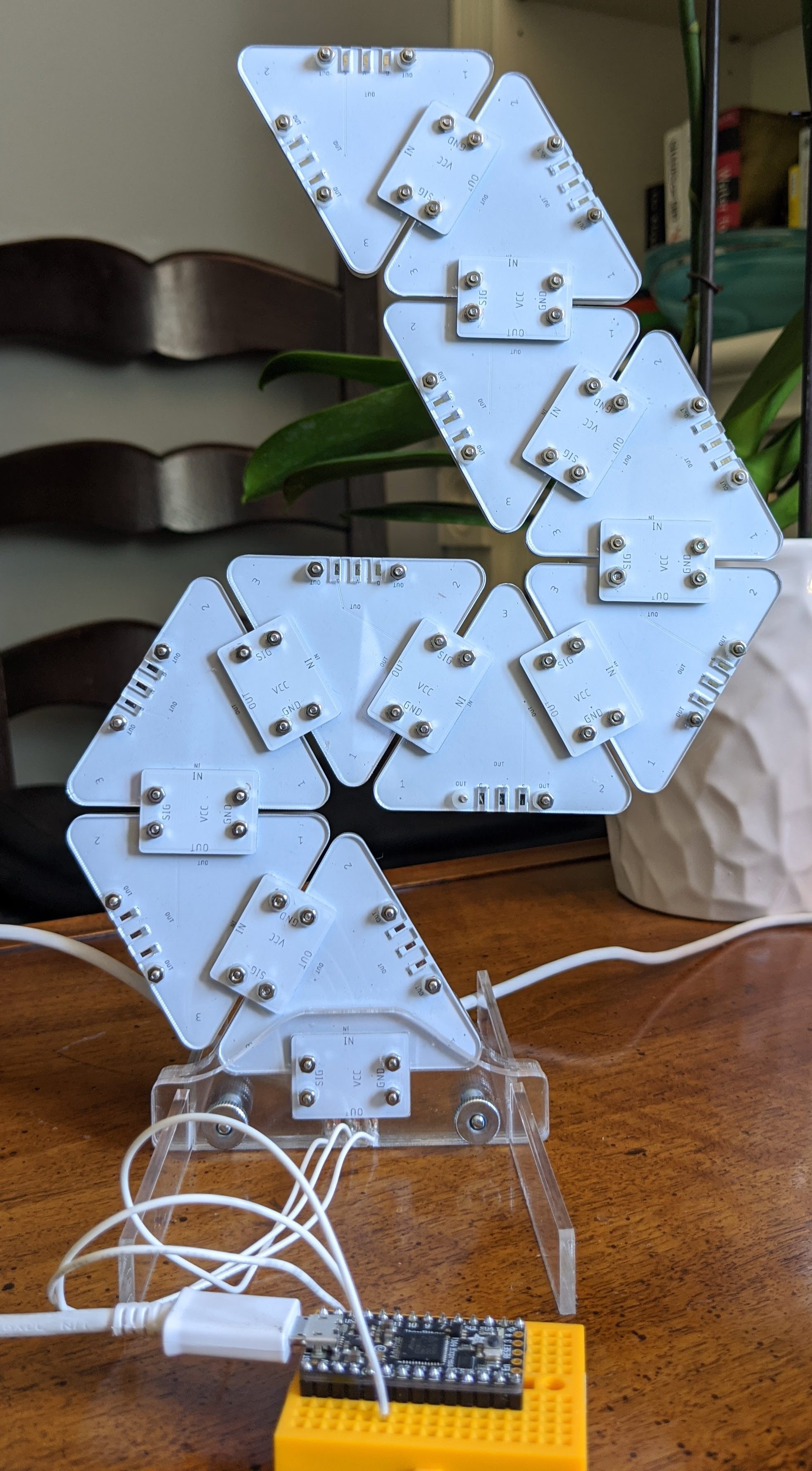Nanoleaf is well-known as being that company that makes those lovely glowing tiles that you can hang on your wall. The only thing is, they’re not cheap. So if you want a really cool layout, you have to spend a great amount of money. [Projects with Red] was inspired by the basic concept, though, and whipped up their own gem-shaped wall tiles along similar lines.
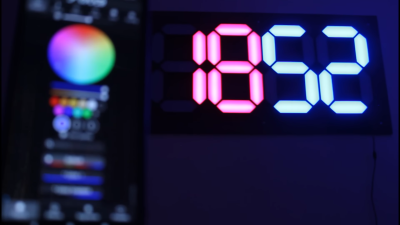
The irregular hexagon shape of each gem has ten connection points to attach the segments together. Physical connections are made using the 3D printed housings of each segment, while connections are simply made with wires and connectors hanging out the back for flexibility.
Each segment features a black printed housing with a solid lid and a translucent acrylic sheet to act as a diffuser. An addressable LED strip is mounted to the lid for illumination, with Dupont connectors for hooking them up to power and data. An ESP32 is used to drive the addressable LED chain, running the WLED.me software for easy control of the lights and animations. The video below also explains how to configure the segments into a giant colorful 7-segment display.
It’s a neat way to build some LED wall art, with plenty of scope to reconfigure it to suit your own needs. We’ve seen some other fun LED tile projects before, too.
Continue reading “Building Nanoleaf-Inspired Wall Panels That Look Great”


